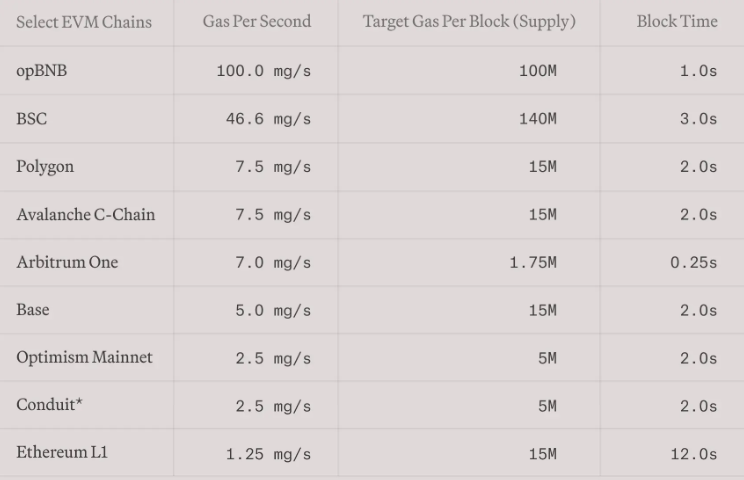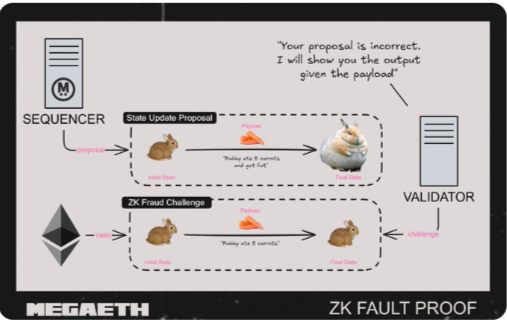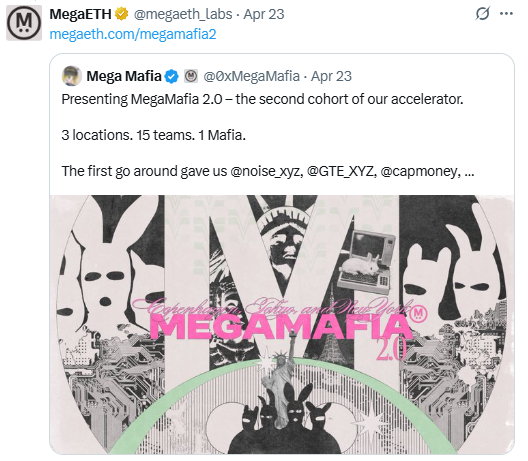MegaETH Shakes Up the Crypto World: Is This the Superfast Blockchain We’ve Been Waiting For?
In the fast-growing world of Ethereum Layer 2 blockchains—where big players like Arbitrum, Optimism, and Base are trying to lead—a new name is creating a lot of buzz. It’s called MegaETH, and it’s being built by a team known as MegaLabs. With big promises like 100,000 transactions per second and 10-millisecond mini blocks, many are calling it the world’s first real-time blockchain.
Even Ethereum founder Vitalik Buterin is supporting it. And with its NFT collection called The Fluffle, MegaETH has already become a hot topic in the crypto community. But is this just hype, or is it really a revolution for Ethereum? Let’s break it down in simple terms.
What Makes a Blockchain “Real-Time”?
MegaETH is famous for its real-time performance—a term that’s become popular in the crypto world. It’s all about speed—making actions like trading, buying NFTs, or playing virtual games happen so fast that users don’t feel any delay. The time taken for a transaction to be sent and then seen across apps and wallets is reduced to milliseconds. In most blockchains, this process takes a few seconds, which often frustrates users.
Research shows that actions that take less than 100 milliseconds feel instant. Delays over 1 second disturb user attention. MegaETH’s 10ms mini blocks give that instant feeling, which is perfect for fast trading, online games, or any app where speed is important. Whether you’re buying a trending NFT or playing in a digital world, MegaETH works smoothly like a top-class website.
How MegaETH Hits These Speeds
MegaETH achieves its high speed through two smart techniques. First, it processes transactions in 10ms mini blocks—faster than a blink—and also supports 1-second blocks to stay compatible with Ethereum. Second, its network uses specially designed nodes that allow even basic devices to keep up. Compared to other blockchains, MegaETH is in a different league. Ethereum takes 12 seconds per block, while faster chains like Optimism or Arbitrum still take around 1 second—too slow for instant tasks. With 1.68 Ggas/sec and plans to scale further, MegaETH processes 100,000 transactions per second, making it the fastest Ethereum-based platform. It’s ideal for building powerful, fast apps.

Why MegaETH Stands Out
With over 120 Layer 2 projects listed by L2Beat, what makes MegaETH special? It is solving the problems that blockchains face today. Data from 2024 shows that even top chains like opBNB can only handle 650 Uniswap swaps or 3,700 token transfers per second, while regular web servers can handle over 1 million transactions per second. Tasks like big calculations take 55 seconds on opBNB but only 30 milliseconds on a regular computer. Most blockchains, with 1-second or more block times, can’t support apps that need instant updates, like trading platforms or virtual worlds.
MegaETH changes that by offering high transaction capacity, powerful computing, and super-fast updates. This allows developers to create apps that are as quick and reliable as websites.
The Tech Behind the Hype
MegaETH Year’s speed is possible due to smart improvements that remove bottlenecks in blockchain design. Its new data system handles large updates easily, allowing it to scale without slowing down, even on simple hardware. Where most systems would crash when dealing with thousands of transactions per second, MegaETH works smoothly. Its storage system manages constant changes efficiently, helping apps stay fast and responsive.
The platform also uses fast code processing so that apps run nearly as fast as regular software, which is great for games and trading platforms. While not all apps need this speed now, MegaETH is ready for big ideas. Its pipeline is so efficient that it processes actions in just 1ms. Its data syncing method is smart enough to let low-powered devices keep up with 100,000 transactions per second, ensuring the network is accessible for everyone.
A Smarter Way to Process Transactions
How does MegaETH handle a flood of 100,000 transactions per second without breaking a sweat? Its transaction processing system is a marvel of engineering, designed to keep critical actions—like a trader’s split-second bid or a gamer’s clutch move—blazing fast, even when the network is slammed. By combining a high-powered sequencer with a network of specialized nodes, MegaETH ensures every transaction is processed with precision and speed, setting a new standard for blockchain performance. Here’s how it pulls off this feat:

-
Dynamic Transaction Ordering for Real-Time Prioritization: The sequencer, MegaETH’s main processor, acts like a super-efficient traffic controller, organizing transactions at breakneck speed. Unlike traditional blockchains that grind through transactions in a fixed order, MegaETH uses advanced concurrency protocols to dynamically prioritize urgent actions. For example, a high-stakes trade on a decentralized exchange can leap to the front of the line, processed in milliseconds even during a frenzy of 100,000 TPS. This flexibility, rooted in MegaETH’s node specialization, supports apps like high-frequency trading or real-time gaming, where delays could mean missing a market opportunity or losing a match.
-
Parallel Processing with Stateless Validation: MegaETH’s full nodes, or support nodes, work in tandem to process transactions simultaneously, sidestepping the bottlenecks of sequential systems. By adopting a stateless validation model, these nodes avoid data conflicts, allowing them to handle complex workloads—like Uniswap swaps or ERC-20 transfers—at 100,000 TPS. This parallel approach scales effortlessly during high-demand events, such as NFT drops or DeFi surges, ensuring apps stay responsive. Picture a busy restaurant with multiple chefs cooking orders at once, delivering plates without delay—MegaETH’s nodes make that kind of efficiency a reality for blockchain apps.
-
Optimized State Access for Lightning-Fast Execution: MegaETH’s sequencer leverages in-memory state access, storing the entire blockchain state (around 100GB for Ethereum) in high-speed RAM to eliminate slow disk reads. This slashes the time for operations like balance checks or contract calls, which account for significant delays in traditional EVMs (e.g., sload operations in Reth). By reducing state access latency to microseconds, MegaETH ensures transactions execute at 1ms speeds, enabling apps like real-time payment systems or interactive virtual worlds to feel as snappy as Web2 platforms, even under heavy load.
A Secure System with Zero-Knowledge Fraud Proofs
MegaETH uses zero-knowledge (ZK) fraud proofs to keep its network secure. This is a big improvement over traditional blockchains that take a long time to solve disputes. MegaETH uses a single, strong proof to detect errors quickly. If someone tries to submit a wrong transaction, a challenger can use the RISC Zero zkVM to create a ZK proof and show the mistake in one step, verified on Ethereum. Based on the OP Kailua hybrid model, disputes are solved in about 1 hour, compared to several days on older systems, keeping the network live and safe.
This method prevents bad actors from delaying the network with fake disputes. Only the challenger pays to prove fraud—about $100 in the worst case—so honest users don’t bear any cost. With EigenDA for fast data storage, MegaETH allows anyone to access transaction data to check for mistakes, making the system fast, secure, and fair.

The Minds Behind MegaETH
The team at MegaLabs is leading this blockchain revolution. Lei Yang @yangl1996, Chief Bunny Feeding Officer and CTO, holds a PhD in computer science from MIT (2024) and specializes in network and synchronization systems. Yilong Li @yilongl_megaeth is a co-founder with the vision behind real-time blockchain. Shuyao Kong @hotpot_dao, also a co-founder, is a Consensys advisor and founder of Hotpot DAO, with a Harvard Business School degree she earned when ETH was just $80. Namik Muduroglu @NamikMuduroglu, the CSO and founding team member, focuses on strategy. Together, they are building MegaETH into the fastest blockchain in crypto.
Speed That Everyone Can Access
MegaETH’s node design balances speed with fairness. Using Ethereum for final security checks and EigenDA for storing data, it gives top performance while staying safe. The network uses four kinds of nodes: high-powered servers do the main work, low-cost nodes create proofs, advanced nodes verify transactions, and basic nodes update data using simple devices. Inspired by Vitalik Buterin, MegaETH remains accessible even to those with basic hardware, making it both fast and fair.
Keeping Transactions Smooth
MegaETH allows up to 500 pending transactions per account. If this limit is crossed, new actions are paused, so users must send transactions in the correct order. If something gets stuck due to an error or low fee, sending the next proper transaction can fix it, thanks to new upgrades. If the wallet faces problems, increasing the fee helps. The system remains active even after reconnection, so users should watch pending transactions closely. It supports 10 million gas for test runs and 1 billion gas for real transactions, handling up to 95,238 actions in one block.
The 2 Giga gas limit keeps the system stable but puts a cap on speed. MegaETH’s smart methods, like grouped processing and faster code, improve performance but require careful management for safety. The team does heavy testing to keep the system running smoothly, even during busy times.
Tools That Keep It Running
MegaETH’s fast performance depends on strong support tools. Users connect through apps and network nodes. Wallets like Dynamic, Privy, ZeroDev, Pimlico, and OKX Wallet make account and transaction handling easy. Explorers like OKX Explorer, the community-run Mega Explorer (https://megaexplorer.xyz), and the Uptime dashboard (https://uptime.megaeth.com) help track network activity. Data tools like Redstone, Chainlink, Gelato, and Pyth offer live data for apps. MegaETH is improving its own nodes to handle heavy traffic and plans to support external tools soon, ensuring a smooth experience.
MegaETH Testnet: A Smashing Success
Since launching on March 6, 2025, the MEGA Testnet (Chain ID: 6342, Native Token: MEGA Testnet Ether) has impressed the crypto world. It reached 1 billion blocks, burned 423 billion gas, and stayed stable with no issues. Developers and infrastructure teams joined from March 6–10, and users joined on March 10 via Discord registration at https://testnet.megaeth.com. With 1.68 Ggas/sec and 15ms block times, it’s a powerhouse, with more growth ahead. The testnet supports smarter accounts (EIP-7702), flexible fees (EIP-1559 with a 0.0025 Gwei target and 0.001 Gwei minimum), a 512KB app size limit (compared to Ethereum’s 24KB), and temporary storage for efficient apps. Developers should expect rare errors or network resets and prepare their apps accordingly. Testnet tokens have no real-world value, and RPC links like https://carrot.megaeth.com/rpc may change during maintenance.
Mini Blocks and Fast Access
MegaETH’s mini blocks are the secret sauce behind its real-time magic, delivering 10ms transaction speeds that make blockchain feel as instant as a text message. Unlike standard blocks that clog networks with heavy data, mini blocks are lean and efficient, designed to empower everyone from mobile users to developers building cutting-edge apps. Paired with the Realtime API, they unlock a world of instant updates and seamless interactions, redefining what blockchain can do. Here’s how this technology drives MegaETH’s unmatched performance:
-
Data-Efficient Blocks for Universal Access: Mini blocks tackle the data bloat of standard EVM blocks, which generate 1.57 TB annually at 100 blocks per second due to their 500-byte headers. By streamlining metadata, mini blocks slash this footprint, enabling low-bandwidth devices like smartphones to stay synced at 100 blocks per second. They’re as reliable as EVM blocks, with every transaction preconfirmed by the sequencer, ensuring no data is lost. This efficiency, rooted in MegaETH’s node specialization, makes real-time blockchain accessible to users on modest hardware, from rural areas to urban hubs, democratizing access to apps like instant payments or social platforms.
-
High-Frequency Processing for Real-Time Apps: Mini blocks are produced every 10ms, a frequency that supports high-tick-rate applications like real-time combat games or high-frequency trading platforms, which demand sub-100ms updates. Unlike chains with 1-second block times, MegaETH’s mini blocks enable 100,000 TPS with minimal latency, ensuring actions like placing a trade or casting a spell in a virtual world feel instantaneous. This high-frequency design, backed by the sequencer’s robust hardware (e.g., AWS r6a.48xlarge with 100 cores), handles peak loads without queuing delays, making MegaETH a go-to for developers building apps that rival Web2 experiences.
-
Realtime API for Developer Superpowers: The Realtime API, extending Ethereum’s JSON-RPC, delivers transaction results in 10ms, compared to seconds for EVM block queries. It supports instant queries (e.g., checking a wallet’s balance), live WebSocket streams for updates like trade confirmations, and paginated log queries for large datasets, ideal for analytics dashboards. Developers can build apps like real-time DeFi platforms or multiplayer games with chat-like finality, where actions are reflected instantly. Mini block preconfirmations match EVM block guarantees, but timestamps align with EVM blocks, and a temporary marker signals preconfirmation until Ethereum’s final check, ensuring reliability and speed.
The Fluffle: A Piece of MegaETH’s Future
In February 2025, MegaETH released The Fluffle—a collection of 10,000 non-tradeable NFTs, priced at 1 ETH each, raising about $13 million. These soulbound NFTs, linked to a fictional world of 16 groups (like Outlaws, Sages, Witches, Bosses), give holders at least 5% of MegaETH’s future token supply and more benefits based on user activity. The whitelist-only mint started on March 11, 2025, on Ethereum’s main network, with over 80,000 people applying. The first drop rewarded early MegaETH supporters and active crypto users, including some free mints. The second drop gave NFTs to MegaMafia teams and active community members through social media checks. Day 1 allowed guaranteed access with fund checks, and Day 2 used a first-come, first-served system with transparent selection. No team members own Fluffle NFTs, keeping it fair, and the community is excited.
MegaMafia and Noise: The Apps Shaping the Future
MegaMafia, MegaETH’s main accelerator, supports top founders creating apps that only real-time blockchains can handle. Started a year ago with the belief that blockchain speed means little without strong apps, it focuses on new, unique applications. The first group, including @noise_xyz, @GTE_XYZ, @capmoney, and @Euphoria_fi, raised over $40 million from big investors like Franklin Templeton, Robot Ventures, Maven11, and Figment Capital—more than MegaETH’s own funding. Now, MegaMafia 2.0 brings 15 new teams across Copenhagen, Tokyo, and New York for a year-long program to build future-ready apps. Applications closed on June 1 after 300+ entries. Finalists were flown to New York in mid-June for interviews. The program focuses on teamwork, shared learning, and turning bold ideas into working apps, with help from the MegaETH team, alumni, and advisors.

MegaMafia 2.0 applications showed that new builders care more about users than technical specs. Consumer apps led with 35.2%, followed by DeFi (32.8%), AI (13.3%), gaming (7.8%), and others like DePIN (2.3%). The word “user” appeared 552 times in answers, more than “crypto” (475) or terms like “latency” (158), showing a user-first mindset. Founders talked about problems like confusing interfaces and too much focus on money. About 43% said that mainstream users want simple, useful features—not technical jargon. They criticized “WAGMI” hype and projects chasing trends without solving real problems, stressing the need for quick, responsive apps (like chat-style transaction finality) made possible by MegaETH’s 512KB contracts and under-10ms blocks. These features help build complete apps like decentralized banks or real-time games, without breaking into many small apps.
The ecosystem is already thriving. Apps like GTE (a fast trading app), Valhalla (futures trading), Euphoria (fun trading), Sweep (live streaming with betting), and Autonomous World Engine (3D worlds) are pushing boundaries. Noise, a popular platform, lets people trade based on live social trends, turning online buzz into value. These projects use MegaETH’s speed to bring real use to Ethereum.
Funding the Future
MegaETH has raised about $57 million:
-
June 2024: $20 million seed round led by Dragonfly Capital, with Vitalik Buterin and Joseph Lubin.
-
December 2024: $10 million through Cobie’s Echo platform.
-
February 2025: ~$13 million from The Fluffle mint.
With a valuation of over $540 million, MegaETH is preparing for its mainnet launch in Q4 2025, ready to shake up the crypto world.
What’s Next for MegaETH?
- Join 245,630 Fans on Discord: Dive into MegaETH’s buzzing 245,630-member Discord (https://discord.com/invite/megaeth) for testnet updates and dev chats.
- Follow 173.7K on X: Catch the latest at @megaeth_labs on X (173.7K followers, https://x.com/megaeth_labs) for news and app reveals.
- Connect with 8,405 on Telegram: Get quick updates in MegaETH’s Telegram (8,405 subscribers, https://t.me/+wN8geyhVpE8yNmRl).
- Build with MegaForge: Developers, join MegaForge to create apps using MegaETH’s 100,000 TPS.
- Explore and Claim Fluffle: Check https://megaexplorer.xyz or the testnet (https://testnet.megaeth.com). Fluffle holders, claim your 5% token share at https://linktr.ee/megaeth_labs.